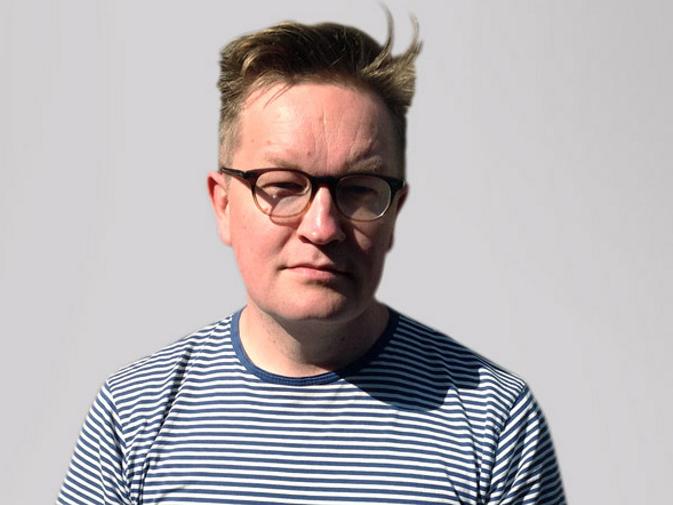Public art should be more than just an add-on, says Ossian Ward
During the 14th International Architecture Biennale in Venice this year the Lisson Gallery, in collaboration with Berengo Studio, will present an exhibition of sculpture and installation that aims to address the complex spheres of the public realm and the built environment, under the title Genius Loci - Spirit of Place. Its head of content, journalist Ossian Ward, argues that public art need not be a decorative add-on but can be used to form meaningful relationships between people and their surroundings

Public art, by its very nature, should be out in the open, accessible and 'free' for everyone to see. But this doesn't mean it needs to be brought into being through direct public consultation, or designed by committee. Indeed, public art shouldn't aim to please all of the people all of the time, else it is doomed to fail. Misjudged attempts to prioritise public, rather than artistic, logic have led to the trend for one overblown thing here, a shiny sculpture there and one inoffensive nonentity plonked in one plaza after another. As a result, our expectations of what public art can or should be are now exceptionally low.
In a similar vein, during the opening salvo of the London press conference for the 14th Venice Biennale the curator Rem Koolhaas proclaimed his disappointment with most contemporary architecture. He provocatively projected a slide of buildings around the world as they looked when newly constructed in 1904 - incorporating as they did all manner of eccentric facades and contrasting vernacular styles. He then moved on a century to his next slide from 2014, in which all the same cities are now populated by near-identical glass and steel towers and skyscrapers. Public art often suffers the same fate as global architecture by being generically corporate, too parochial (in the manner of some hastily programmed local interaction) or simply bland, conceptually and aesthetically.
Contrary to this malaise, public art need not be an adornment to anodyne architecture or a decorative add-on. Rather it has the potential to uplift the spirit and astonish the viewer, as well as to enhance, complement or even to come to symbolise its surroundings. An example of this mutual benefit - albeit a giant and exceptional one - is Anish Kapoor's Cloud Gate (2004-06), which was conceived as a central focus for the new Millennium Park in Chicago, drawing the sky and the surrounding buildings into its seamless curved stainless-steel surface. Since its unveiling, Kapoor's undulating and essentially abstract sculpture has become an unofficial emblem of the city and a tourist attraction in its own right.
Another public project that reflected and arguably improved its environment began around the same time in Culiacán, a city in Mexico known for its drug-related gun crime. Pedro Reyes, an artist based in Mexico, responded to a weapons amnesty there by securing and melting down the guns to make an equal quantity of shovels. These in turn were used to plant the same number of trees, 1527 to be precise. Despite Reyes' Palas por Pistolas seemingly representing the inverse impetus and proportion of Kapoor's monumental symbol, both these works reacted and responded well to their sites, each managing to distil something of the spirit of its place - both becoming a genius loci - albeit in very different ways.
In classical mythology the Latin term genius loci refers to a protective spirit attached to a place - a guardian watching over a particular site and imbuing it with a special character or unique outlook. This has informed an exhibition organised by Lisson Gallery with the Berengo Foundation, entitled Genius Loci - Spirit of Place, taking place during (and hopefully responding to) the Venice Architecture Biennale as curated by Koolhaas. The exhibition presents independent works by artists who have engaged with the public realm, showing the qualities of thought and material that can be applied creatively to enhance different locations.
Given the myriad factors affecting the totality of our spatial relations to architecture, it is perhaps impossible to hope to collapse every aspect and atmosphere of a place into one object, but it is clear that occasionally there are perfect alignments of people, things and environments.
Siting a work of art in the built environment, an existing landscape, an as-yet undeveloped scheme or anywhere in the so-called 'public realm', is a resolutely complex and (contrary to its free-for-all nomenclature) often a very expensive business. Public art is also fraught with difficulty, involving as it does so many stakeholders, town planners, architects and city councillors - not to mention the artists themselves.
In the great debate and battle now being waged over who commissions or controls what kind of public art gets made and seen, it should never be forgotten that the art and the artist should first and foremost have their own integrity to enable a confident and sympathetic engagement with the place and its architecture. To get satisfying places to live and work, we must first create meaningful, symbolic structures that form relationships between us and our surroundings. When architects, artists, developers, and planners understand this fully the results may have the character of genius.












